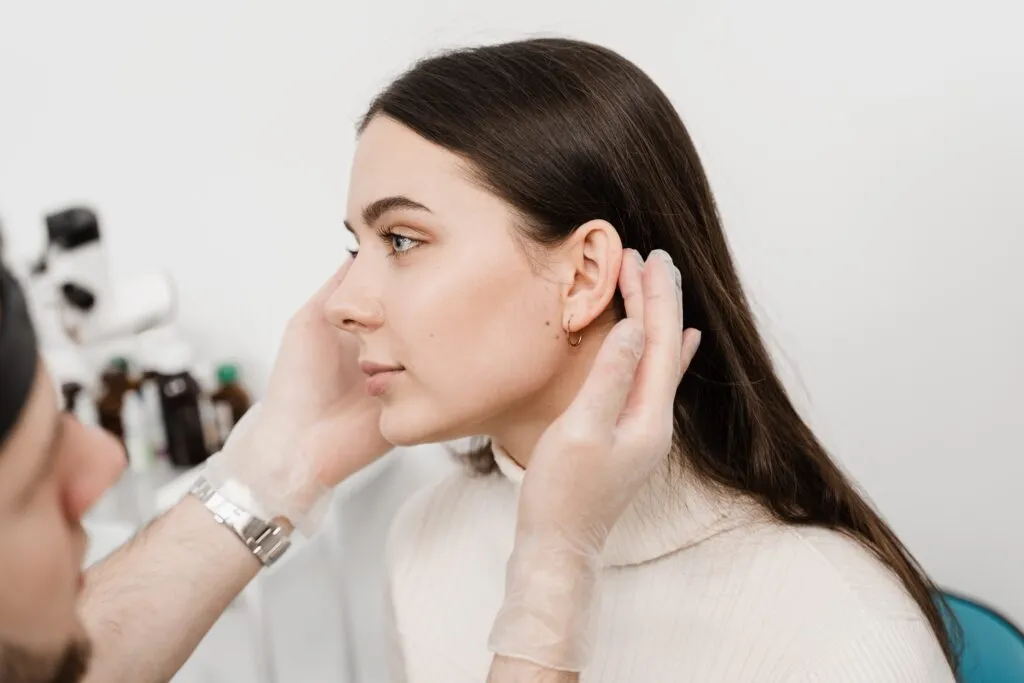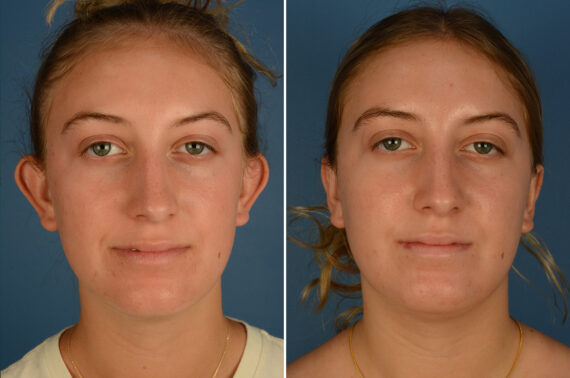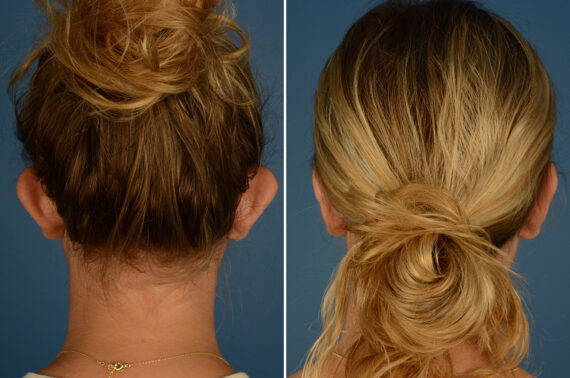Undergoing otoplasty, also known as ear pinning surgery, can be a life-changing experience for individuals who seek to correct their ear shape or position. While the surgery itself is essential, the recovery period plays a vital role in achieving the desired outcome. In this article, we will delve into the various aspects of otoplasty aftercare, providing valuable insights on how to manage recovery time effectively for optimal healing.

Maximizing Your Otoplasty Recovery
- Rest and avoid heavy physical activities immediately after otoplasty to minimize pain, swelling, and bruising, allowing for a smoother recovery process.
- Adhering to post-op instructions, such as wearing a headband at night, applying prescribed antibiotic ointments, and following cleaning guidelines, is crucial for preventing infections and ensuring optimal healing.
- Managing pain and discomfort with prescribed painkillers and cold packs can significantly reduce swelling and make the initial recovery period more comfortable.
- Regular follow-up appointments with your surgeon are essential for monitoring progress, addressing any concerns, and ensuring the surgical site is healing properly.
- Gradually resuming daily activities under your surgeon’s guidance, while avoiding strenuous activities, ensures your ears heal correctly and reduces the risk of complications.
Otoplasty Healing Time: What to Expect
Different people heal at different rates after otoplasty, but in general, it takes a few weeks for most of the obvious signs of surgery to go away. The lines of the incision will gradually fade away and mix in with the ear’s natural shape. But it’s important to keep in mind that full recovery can take a few months, and the end result might not be fully clear for up to a year.
How is Otoplasty Recovery?
Recovering from otoplasty usually takes about two weeks, but it can differ depending on the person and the specific surgery. Right after the surgery, you can expect some pain, swelling, and bruising. During this time, it’s crucial to rest and avoid any heavy physical activities. Also, try not to touch or fiddle with your ears to prevent infection or other issues.
After the first week, most people can get back to their regular routines with some care. This means avoiding contact sports and wearing compression bandages over your ears. Swelling might stick around for a few weeks, so using ice packs and taking hydrogen peroxide baths twice a day can help speed up the healing. Keeping your ear canals clean and dry is also important for a smooth recovery.
The First Day After Otoplasty
On the first day after otoplasty, a facial plastic surgeon will give the patient pain management instructions as well as instructions for wearing a headband at night to help with post-surgery swelling. Additionally, antibiotic ointment may be prescribed to help prevent infection and reduce inflammation. It is also important for patients to follow their cosmetic surgery instructions carefully in order to ensure the best possible results from their ear correction surgery.
Caring for Your Incisions and Dressing
It is essential to properly care for incisions and dressings following otoplasty surgery in order to minimize the risk of complications and ensure proper healing. Patients should get plenty of rest and follow their surgeon’s instructions for cleaning, changing dressings, and applying antibiotic ointment. Otoplasty surgeons often recommend a chest or neck compression garment to reduce swelling, as well as an ice pack, to help reduce pain and prevent bruising. If any signs of infection, such as redness, swelling, or chest pain occur, patients should contact their plastic surgeon immediately.
Are You Ready For A Consultation?
You are about to take the first steps towards improving your appearance and enhancing your self-image by learning about contemporary plastic surgery.
Managing Pain and Discomfort
It’s normal to feel pain and discomfort in the beginning stages of healing. Your doctor will give you painkillers to help you deal with any soreness. Putting cold packs on the area where the surgery was done can also help reduce pain and swelling. But you should always talk to your surgeon before doing anything else to ease your pain that hasn’t been suggested.
Cleaning and Hygiene Tips
During the recovery time, it is very important to stay clean and healthy. Avoid putting the surgery area in places that are too wet or dirty and keep it dry. Cover the cut area with a wet bandage or a clean towel when you take a shower to protect it. Do not use harsh soaps or other items that could irritate the wounds.
Timeframe for Swelling and Bruising
Swelling and bruising are common side effects of otoplasty and will gradually subside over time. Typically, the initial swelling will peak within the first few days and begin to improve after one week. Bruising may also appear during this time and may take up to two weeks to fade. Following your surgeon’s instructions on cold compresses and head elevation can aid in reducing swelling and bruising.
Returning to Daily Activities
Returning to your daily activities should be done gradually and in consultation with your surgeon. While you might feel eager to resume your regular routines, it’s important to allow your body enough time to heal. Avoid activities that may strain your ears, such as contact sports, heavy lifting, or wearing hats that put pressure on the surgical area. Gradually ease back into your usual activities under the guidance of your surgeon.
Follow-up Appointments and Monitoring Progress
Regular follow-up appointments with your surgeon are crucial for monitoring your progress and ensuring optimal healing. Your surgeon will assess the surgical site, remove any sutures if necessary, and offer guidance on ongoing care. These appointments provide an opportunity to address any concerns or questions you may have, ensuring a smooth recovery process.
Before & After Photos
* Each patient is unique and individual results may vary.
Dos and Don’ts During Otoplasty Recovery
To ensure a smooth and successful recovery, there are several dos and don’ts to keep in mind. DO follow your surgeon’s aftercare instructions diligently, take prescribed medications as directed, and maintain good hygiene. DON’T expose your incisions to excessive moisture or direct sunlight, engage in strenuous activities, or ignore any unusual symptoms.
Emotional Support: Dealing with Expectations and Anxiety
Otoplasty recovery not only involves physical healing but also emotional adjustment. It’s common to have expectations and anxieties throughout the recovery process. Remember to communicate openly with your surgeon and seek emotional support from loved ones or support groups. Understanding that recovery takes time and embracing the journey will help maintain a positive mindset.
Benefits of Wearing a Headband During Recovery
Wearing a headband during the recovery period can offer numerous benefits. It helps in providing support to the ears, minimizing movement, and reducing the risk of accidental injuries. Additionally, it can serve as a visual cue to others that you are currently in the recovery phase, prompting them to be mindful and considerate of your healing process.
Potential Complications and When to Seek Medical Help
Even though otoplasty is usually safe, it’s important to know what problems could happen and when to call your surgeon. If you notice any signs of infection, excessive bleeding, serious pain, or any changes in your recovery that you didn’t expect, you should see a doctor right away. Your surgeon is the best person to look at your case and give you the right advice.
Maintaining Long-term Results
It is important to do what your surgeon tells you to do to keep the effects of your otoplasty for a long time. It is very important to keep your ears safe from harm, stay away from loud noises for long periods, and clean your ears regularly. By seeing your surgeon regularly for check-ups, you can make sure that any problems are dealt with right away, which will protect the success of your surgery.
Lifestyle Adjustments After Otoplasty
A lot of the time, otoplasty makes people feel better about themselves and their looks. Having more confidence can make you change many things about your life, like trying new looks, doing things you might not have done before, and loving the way you look. Don’t forget that otoplasty is a way to improve your general health and accept who you are.
Otoplasty recovery time should not be underestimated. By understanding the various aspects of managing recovery effectively, individuals can optimize their healing process and achieve the desired results. From understanding the initial stages of recovery to maintaining long-term results, this comprehensive guide provides invaluable insights into otoplasty aftercare.
Remember, patience is key, and by following the guidance of your surgeon, you can embark on a successful journey toward a more confident you.

Otoplasty Recovery FAQs
Otoplasty recovery can take one to three weeks for most of the swelling and bruising to subside, but complete healing can take several months, with final results may not be visible for up to a year.
On the first day after otoplasty, it is essential to rest, keep your head elevated, and avoid strenuous activities to ensure optimal healing.
Proper care involves following your surgeon’s instructions on cleaning the incision area, changing the dressing regularly, and avoiding touching or scratching the incisions to prevent infection.
If you experience signs of infection, excessive bleeding, severe pain, or any unexpected changes in your recovery, it is important to contact your surgeon for medical assistance.
Although visible signs of surgery may fade within several weeks, the complete healing process can take several months, with final results potentially becoming fully apparent up to a year after the procedure.

